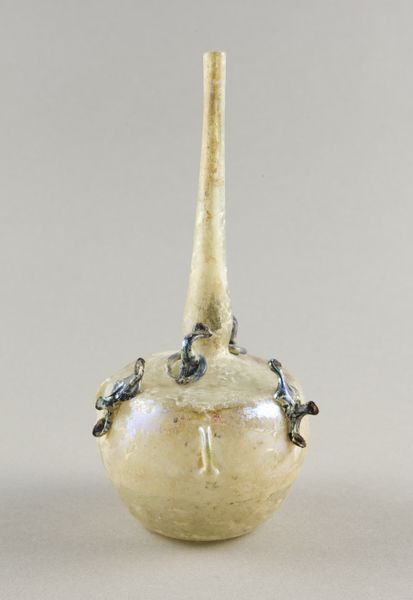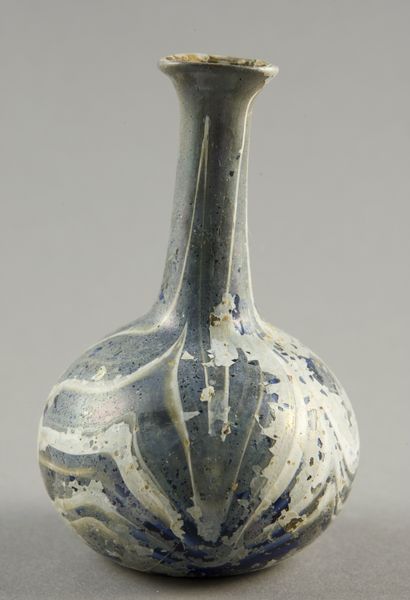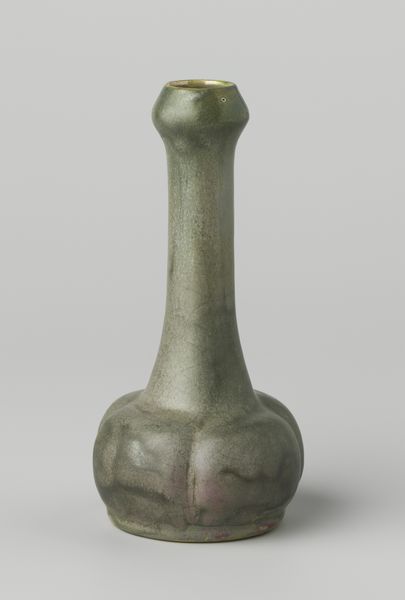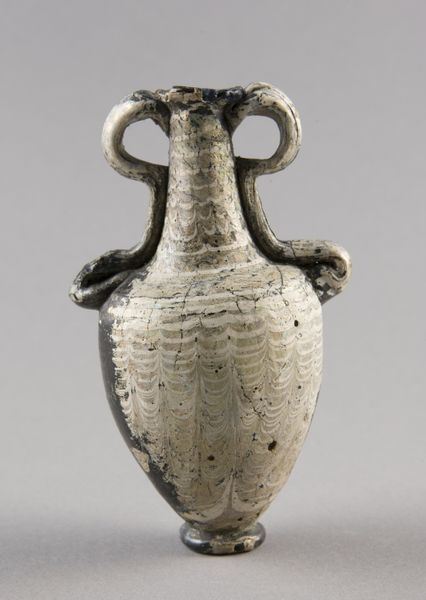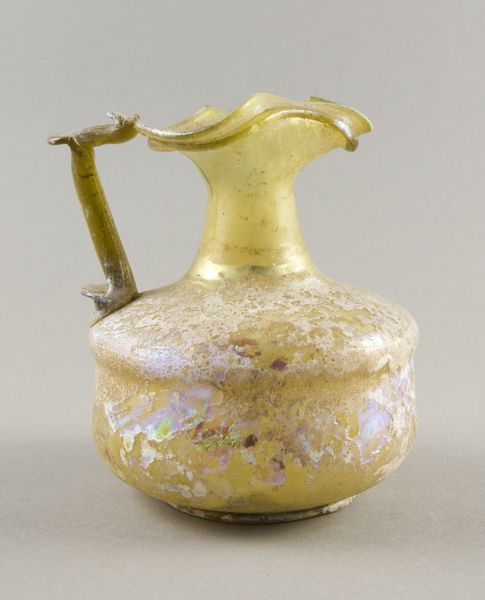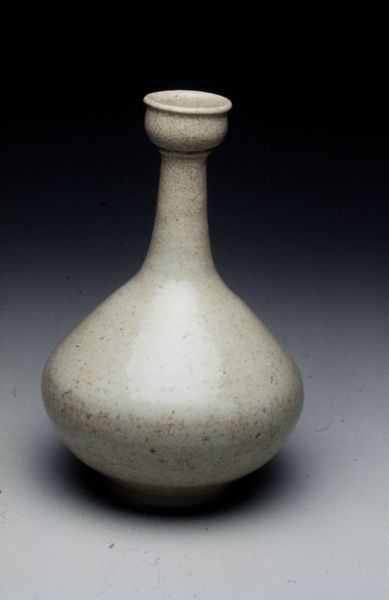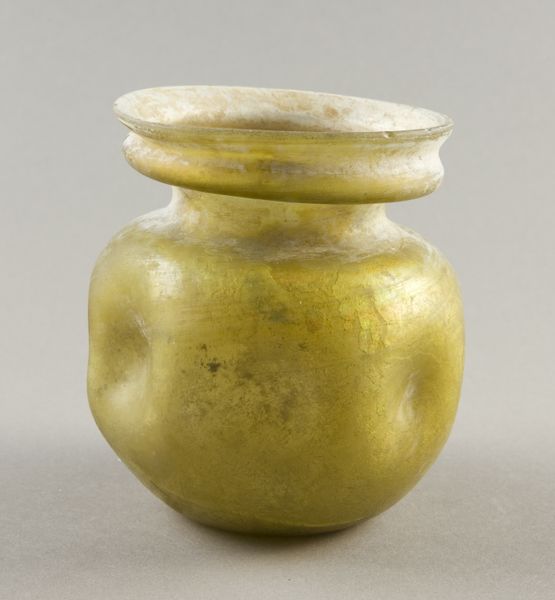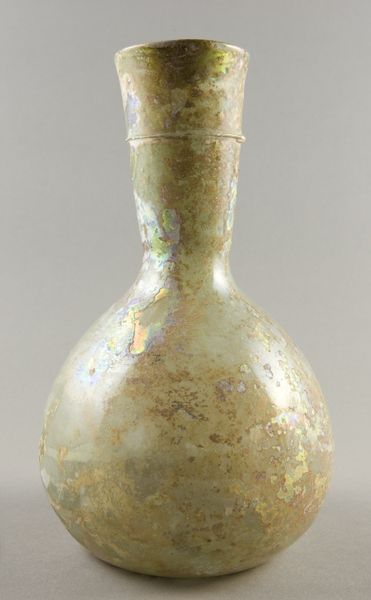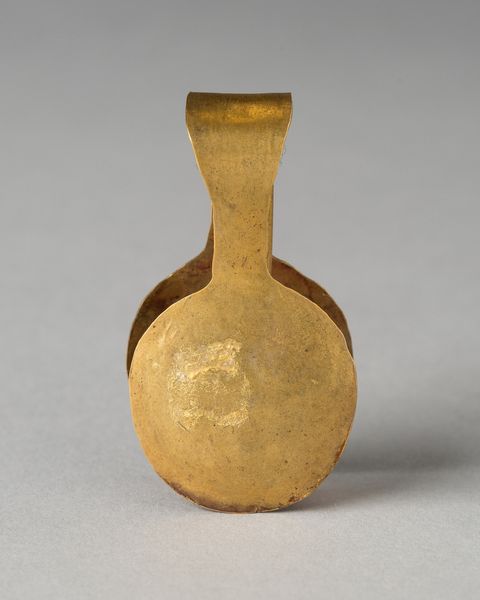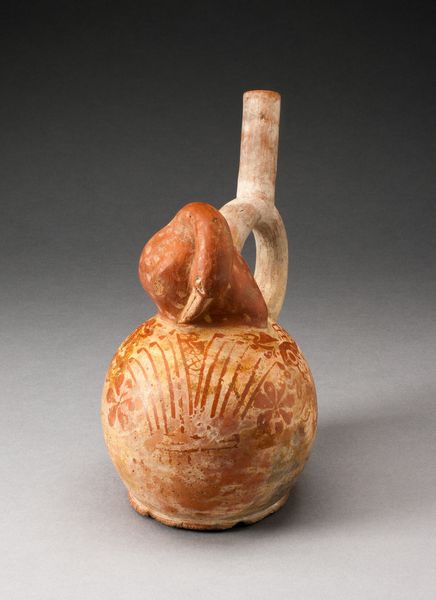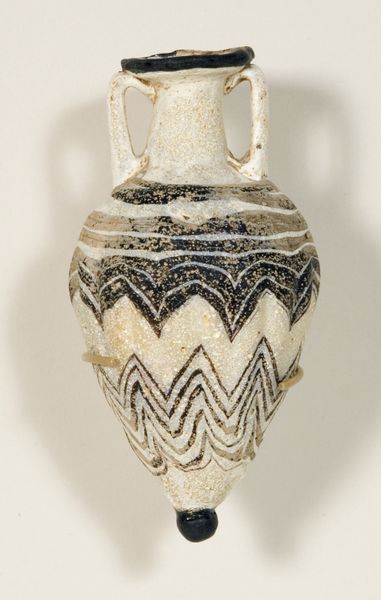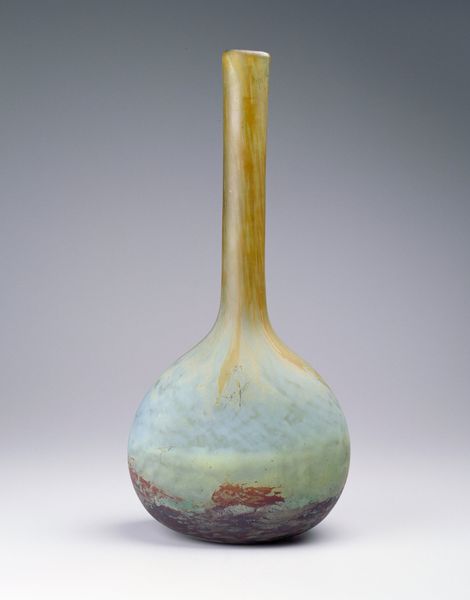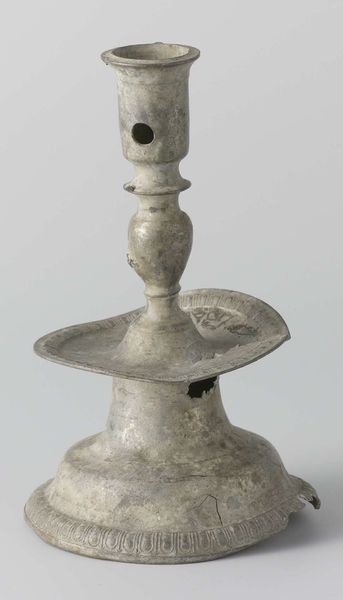
glass
#
medieval
#
glass
#
vessel
#
ceramic
#
islamic-art
Dimensions: 7.3 × 4.5 × 3.1 cm (2 7/8 × 1 3/4 × 1 3/16 in.)
Copyright: Public Domain
Curator: Welcome! Here at the Art Institute of Chicago, we're looking at an intriguing glass Flask, dating back to the 7th-13th century during the medieval period. Editor: Immediately, it feels delicate yet substantial. I'm drawn to the materiality – the almost earthy color of the glass and its form are grounding, aren't they? Curator: Indeed. Its creation likely occurred within the context of Islamic art and trade. Glassblowing was a significant technology during that time. What we often overlook, however, is that its function dictated its form and the roles that the flask fulfilled within the social dynamics of the era. Were they used to hold perfumes? Medicines? Sacred liquids? Editor: The production of glass itself is fascinating. It wasn’t simply an aesthetic choice; access to these skills and resources speaks volumes about societal structures. How does the act of creation intertwine with daily life? Its form makes it appear so functional, doesn’t it? The skill in its creation reveals how people related to materiality back then, from sand and heat, a beautifully utilitarian object arose. Curator: Precisely, and to consider it now, absent of the user or owner, raises other questions about access and visibility. In this period, the dynamics of production meant labor was most often distributed unfairly. Were the hands that created this one free or enslaved? To ponder those inequalities allows the object to tell more than an aesthetic story. Editor: Looking at its form, I wonder, given that many vessels of this era often served ceremonial roles for elite communities, whether the seemingly humble material – glass – was a conscious choice to denote a position of affluence? Curator: That’s a brilliant question! Material and color may have played significant roles in determining the perceived value of the object. Consider who the artifact was meant to serve or impress, and perhaps that speaks to power, class, and status in that era. Editor: The labor required to fashion something like this by hand gives you pause. Thinking of the individual, maybe many, who invested time and skill into its creation evokes a profound appreciation. The Flask as both artifact and a witness to lives lived long ago. Curator: Absolutely, this seemingly simple flask can reveal layers of economic, social, and philosophical thought if we continue to question how an object participates in its environment and how labor contributes to meaning.
Comments
No comments
Be the first to comment and join the conversation on the ultimate creative platform.
